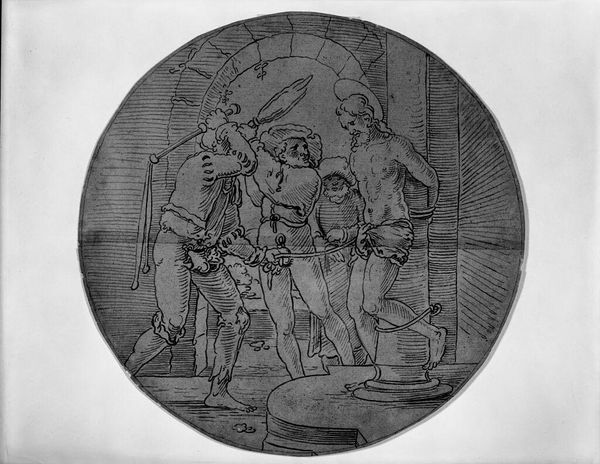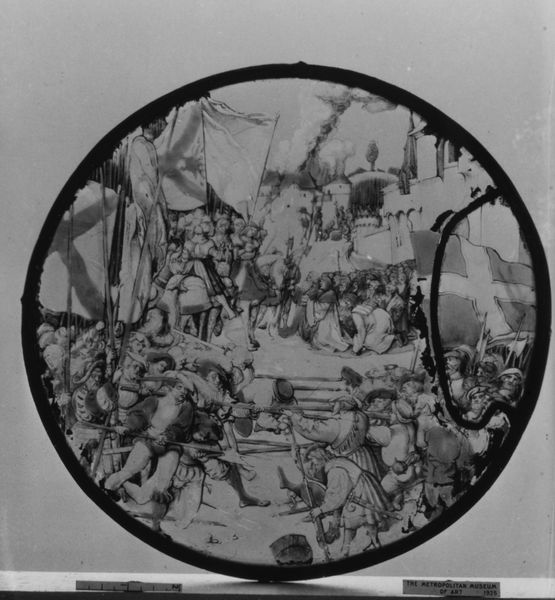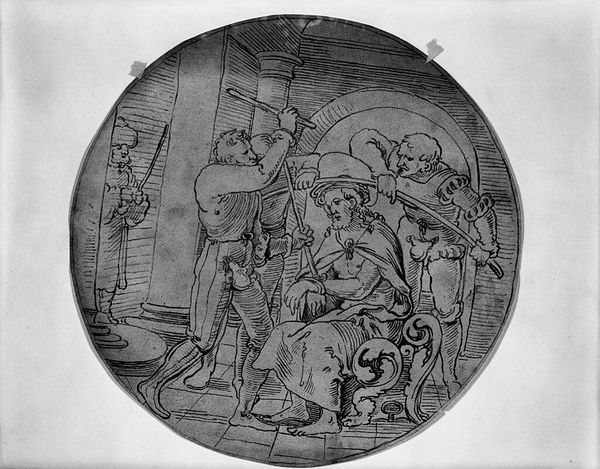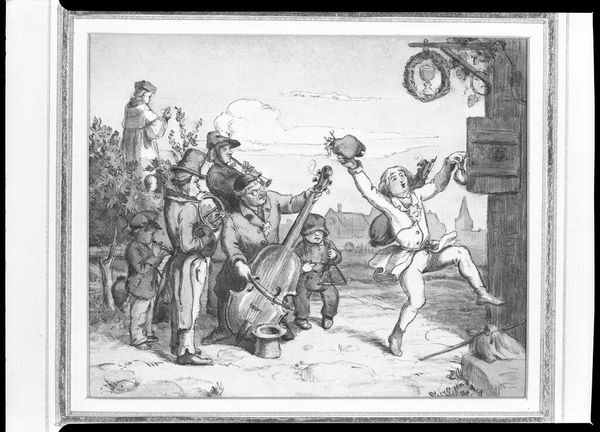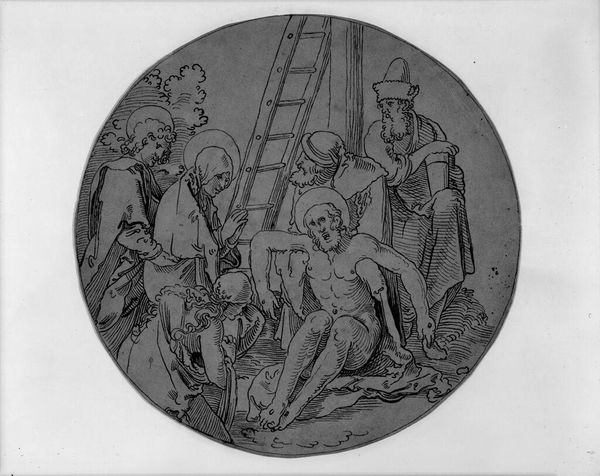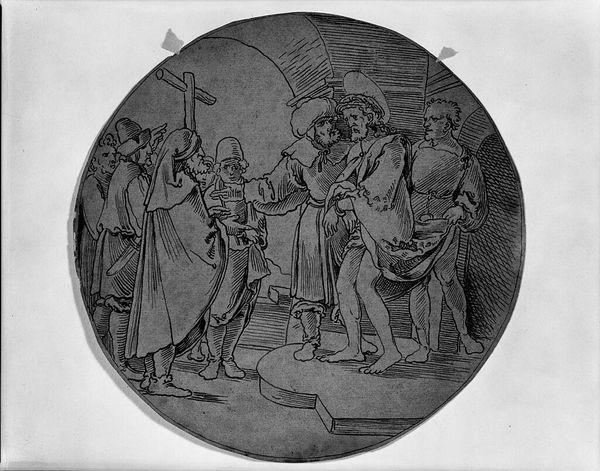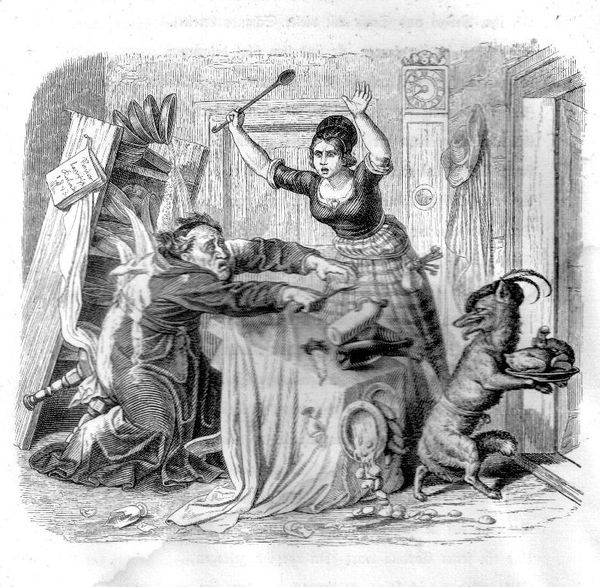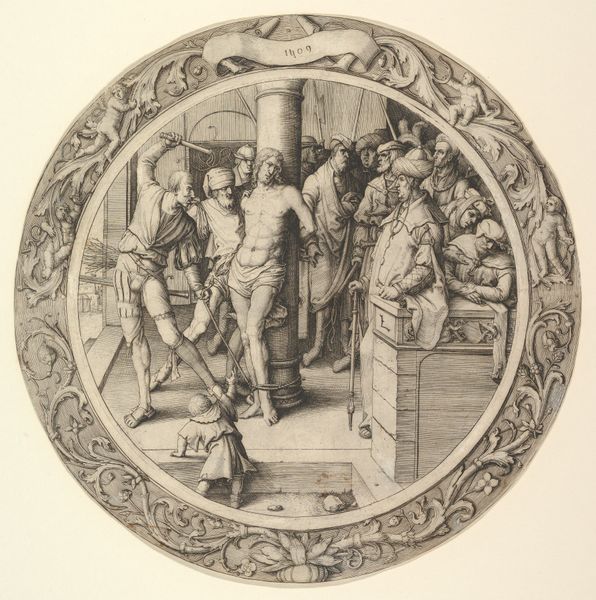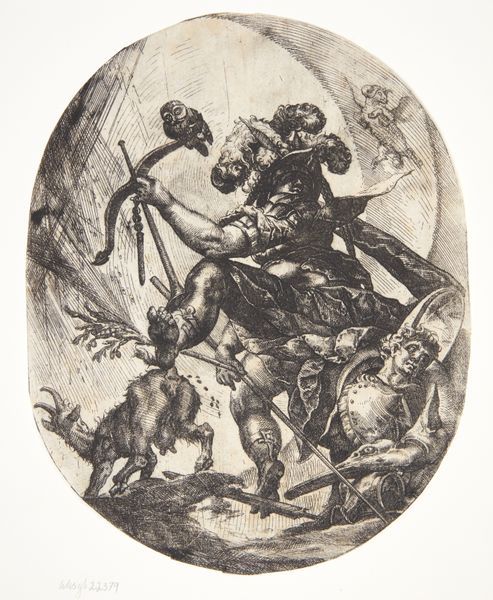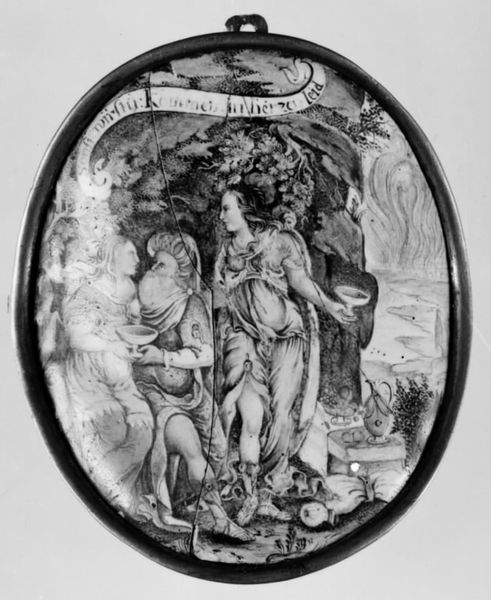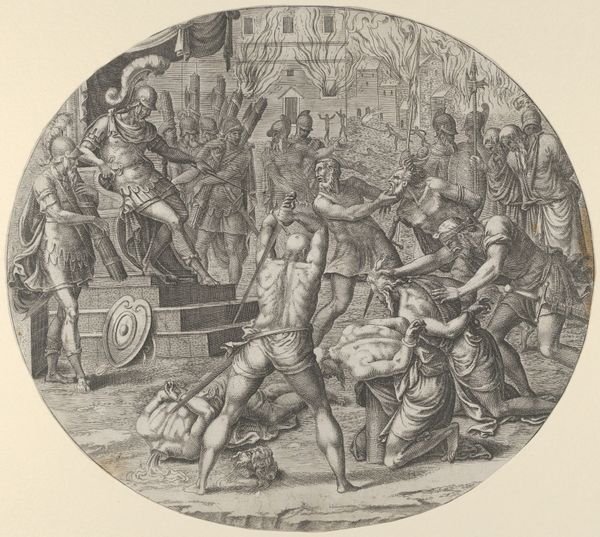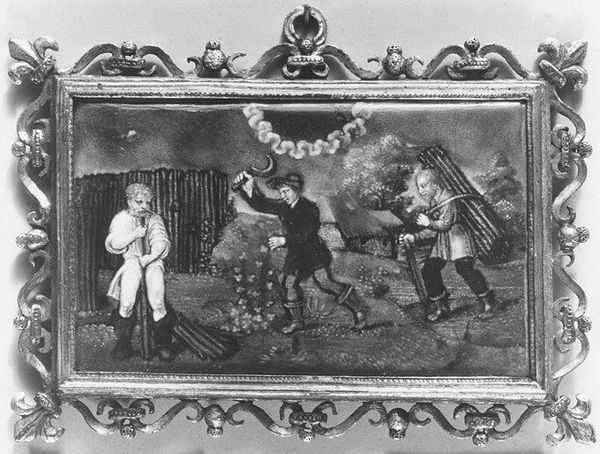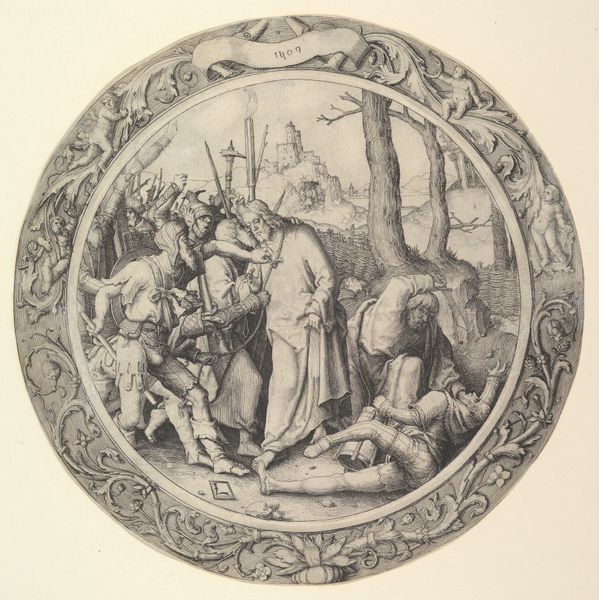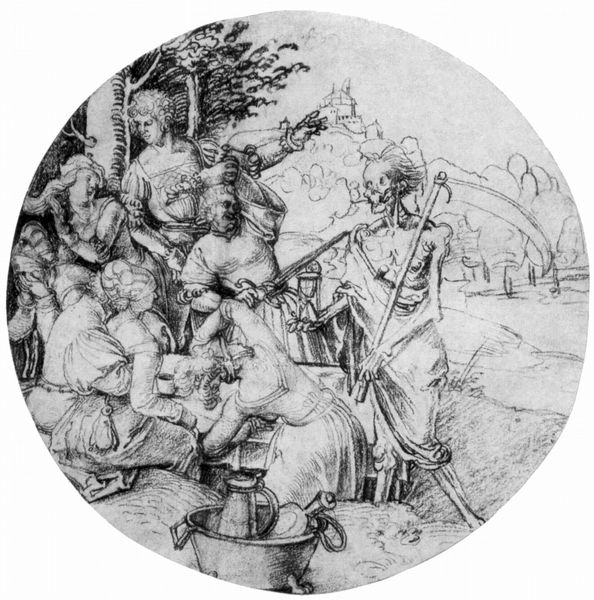
painting, glass, ink
#
painting
#
figuration
#
11_renaissance
#
glass
#
ink
#
framed image
#
genre-painting
#
history-painting
#
decorative-art
#
italian-renaissance
Dimensions: Diam. 10 in.
Copyright: Public Domain
Editor: This stained-glass roundel, "The Prodigal Son Feasting," was created by Pieter Coecke van Aelst sometime between 1535 and 1545. There's something both festive and cautionary in the scene, a morality tale almost. What sort of societal narrative was van Aelst trying to create here? Curator: That’s a very astute observation. Stained glass at this time served not just a decorative purpose, but also a didactic one. The story of the Prodigal Son, seen through the lens of the Italian Renaissance and imported to the Netherlands, offers a potent allegory about wealth, morality, and social order. Notice the architectural setting—what does it suggest about the patron’s status and understanding of Italianate grandeur? Editor: It looks pretty fancy - there is marble everywhere! So the commissioner may have been very wealthy, attempting to show how in touch they were with international artistic tastes by including the trendy arches and columns? Curator: Precisely. The roundel acts as a signifier of status. More critically, the inclusion of the prodigal son theme points towards anxieties about excessive spending, and perhaps the nouveau riche flaunting their gains. It's interesting how art is both mirroring societal development and pushing the boundaries of how we understand wealth. Does the way that this theme has endured say something about unchanging social dynamics, you think? Editor: It really makes me consider if, perhaps, similar stories from our own time might resonate in a way that mirrors that of the 16th century viewer? What happens when this sort of window finds its way into a modern museum, though? Has its job description shifted? Curator: Now it invites us to ponder historical ideas about societal problems and values and their development into modernity. Its primary goalposts now sit squarely within the realms of educational insight and, importantly, the generation of more questions surrounding both history, and current cultural values. Editor: I see, a piece that now reflects upon itself, and society’s own view of historical frameworks. Thank you so much!
Comments
No comments
Be the first to comment and join the conversation on the ultimate creative platform.
